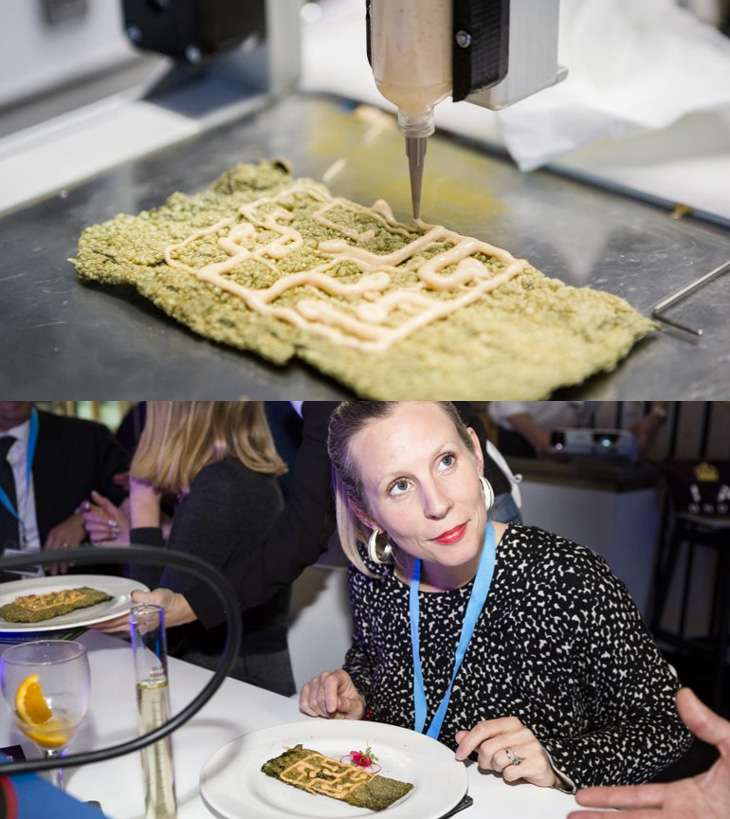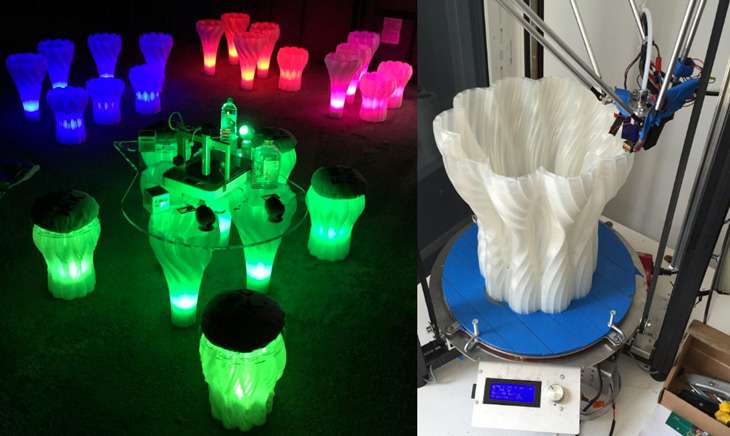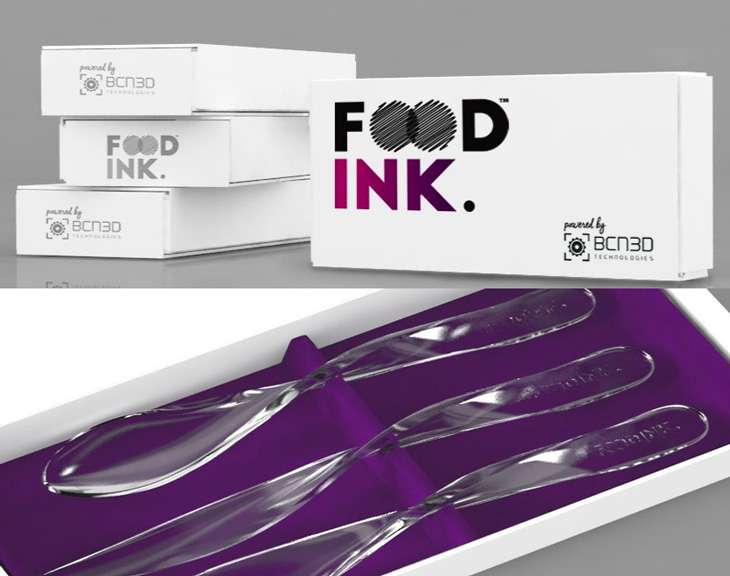Food Ink. - the world's first 3D printed restaurant is almost here!

From toys and guns to human organs and even entire houses - 3D printing is changing the way we do things. Now, a concept restaurant in the UK is taking 3D printing out of labs and factories, and bringing it to your plate.
Come 25 July, Shoreditch, London will play host to Food Ink. - a restaurant with an entirely 3D printed menu. But not only will the food be 3D printed, but so will the cutlery, furniture, vases, art and lighting.
Founded by Antony Dobrzensky and Marcio Barradas, Food Ink will offer diners the chance to sample a nine course menu where every item is 3D printed. Not just that, the experience will also include virtual reality headsets, wall-to-wall projections and even music composed by artificial intelligence.
Also read - The most pricey meatball in the world isn't at a Michelin restaurant. It's lab-grown
The experience will be a dear one though, setting diners back by 250 euros a head.
The start of Food Ink.
While the London opening will be the world premiere of Food Ink., the restaurant concept was trialled in April 2016 with 6 guests at the inaugural 3D Food Printing Conference held in Venlo, Holland.
That however, was not Food Ink. in its present form. Instead, it was a trial concept by byFlow, a Dutch 3D printer manufacturer, to showcase its Focus 3D Printer. The Focus 3D printer, a multi-material printer, is capable of printing practically anything that can be turned into paste - from meat to cheese to hummus and even pizza dough.
The company, a family venture founded by siblings Nina and Floris Hoff, enlisted the help of Michelin star chef Matteo Blanch to create a 3D printed gastronomic treat for conference attendees.

Visitors to the conference had a chance to try a host of creations produced by byFlow's flagship printer. This included chicken (printed in the shape of an octopus), champagne-dissolved meat and 3D printed goat cheese.
However, the real treat, a five course meal, was reserved for six lucky attendees. They got to feast on delicacies ranging from carpaccio and mystic prawns to guacamole.


What's 3D printed food like?
3D printed food has its limitations. The printer being used by FoodInk is the same one they'd debuted with at Venlo. It works best with things that are like paste - smashed peas, chocolate mousse, hummus, alcohol and caviar.
Solid foods, like meats are slightly more of a problem. As Food Ink.'s creative director told Daily Mail, "Meat is tricky to print for sanitary concerns and in terms of generating a genuine texture or 'mouth feel'".
Also read - Rio Olympics to have Indian food on the menu for athletes
However, that hasn't stopped them from incorporating it. From chicken, that's first ground to a paste and printed into designs before being steamed, to meat being dissolved in alcohol to allow its 3D printing, the carnivores of the world can rest easy in the knowledge that there will be meat.
It's also important to note that the 3D printing is more of a design technique than a cooking process. The printers allow for the production of foods in shapes and styles that would otherwise be hard or even impossible. The printed foods are then subjected to a variety of cooking processes from baking to frying.
The odds are that 3D printed food made by a novice would probably not be great, but at FoodInk., with the culinary force behind La Boscana behind it, you can expect it to be delicious.
Also read - Food labels are passe. New molecular sensor reveals what's really in your food
The future of the future of food
While the restaurant is opening in London, it won't be filling British bellies for long. It's a pop-up restaurant, which means that after a run of 3 days, the restaurant will down shutters before re-appearing in another city somewhere in the world. The venues mentioned thus far range from Rome to Singapore.
This is because Food Ink. isn't meant to be a for-profit restaurant so much as a proof of concept - that a 3D printed restaurant is now financially and technologically viable.
Speaking at the conference in Venlo, Dobrzensky explained that this."With the pop-up, we want to announce to the world that this concept is now viable, get people excited and hopefully grow the concept into a scalable business. It's a much better way than sitting in a boardroom in a suit making a boring pitch."
If successful, it could kick start a whole movement based around 3D printed food. For now though, all we can do is wait and watch. And by 'watch', we mean literally, because the whole London event will be live streamed.
First published: 16 July 2016, 12:09 IST






![BJP's Kapil Mishra recreates Shankar Mahadevan’s ‘Breathless’ song to highlight Delhi pollution [WATCH] BJP's Kapil Mishra recreates Shankar Mahadevan’s ‘Breathless’ song to highlight Delhi pollution [WATCH]](https://images.catchnews.com/upload/2022/11/03/kapil-mishra_240884_300x172.png)

![Anupam Kher shares pictures of his toned body on 67th birthday [MUST SEE] Anupam Kher shares pictures of his toned body on 67th birthday [MUST SEE]](https://images.catchnews.com/upload/2022/03/07/Anupam_kher_231145_300x172.jpg)






